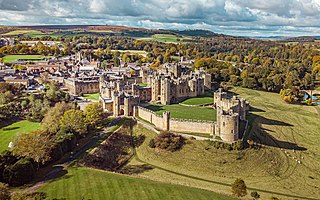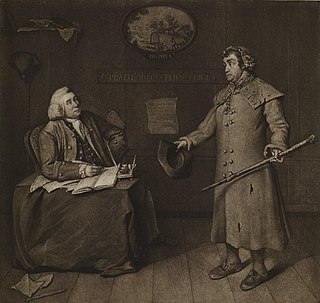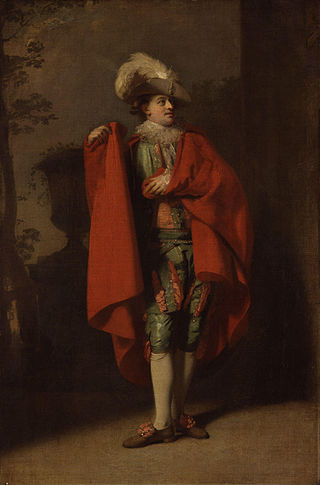
Llywelyn ab Iorwerth, also known as Llywelyn the Great, was a medieval Welsh ruler. He succeeded his uncle, Dafydd ab Owain Gwynedd, as King of Gwynedd in 1195. By a combination of war and diplomacy he dominated Wales for 45 years.

Alnwick Castle is a castle and country house in Alnwick in the English county of Northumberland. It is the seat of the 12th Duke of Northumberland, built following the Norman conquest and renovated and remodelled a number of times. It is a Grade I listed building now the home of Ralph Percy, 12th Duke of Northumberland and his family. In 2016, the castle received over 600,000 visitors per year when combined with adjacent attraction the Alnwick Garden.

Conwy Castle is a fortification in Conwy, located in North Wales. It was built by Edward I, during his conquest of Wales, between 1283 and 1287. Constructed as part of a wider project to create the walled town of Conwy, the combined defences cost around £15,000, a massive sum for the period. Over the next few centuries, the castle played an important part in several wars. It withstood the siege of Madog ap Llywelyn in the winter of 1294–95, acted as a temporary haven for Richard II in 1399 and was held for several months by forces loyal to Owain Glyndŵr in 1401.

Charles Kemble was a Welsh actor of a prominent theatre family.

Matthew Gregory Lewis was an English novelist and dramatist, whose writings are often classified as "Gothic horror". He was frequently referred to as "Monk" Lewis, because of the success of his 1796 Gothic novel The Monk. He also worked as a diplomat, politician and an estate owner in Jamaica.

The Foresters or, Robin Hood and Maid Marian is a play written by Alfred Tennyson and first produced with success in New York in 1892. A set of incidental music in nine movements was composed for the play by Arthur Sullivan.

William Dowton (1764–1851) was a British actor.

William Brewer of Tor Brewer in Devon, was a prominent administrator and judge in England during the reigns of kings Richard I, his brother King John, and John's son Henry III. He was a major landholder and the founder of several religious institutions. In 1204, he acquired the feudal barony of Horsley in Derbyshire.

John Hayman Packer was an actor for David Garrick's company at Drury Lane. Originally a saddler, he created the character Freeman in James Townley's High Life Below Stairs (1759). His parts were usually minor and, late in life, "as a rule" old men in tragedies and sentimental comedies.

John Palmer was an actor on the English stage in the eighteenth century. There was also another John Palmer (1728–1768) who was known as Gentleman Palmer. Richard Brinsley Sheridan nicknamed him Plausible Jack.

Henry Reginald Courtenay (1741–1803) was an English Bishop of Bristol (1794–1797) and Bishop of Exeter 1797–1803.
James Aickin, was an Irish stage actor who worked at the Edinburgh Theatre in Scotland and in theatres in the West End of London.

Warkworth Castle is a ruined medieval castle in Warkworth in the English county of Northumberland. The village and castle occupy a loop of the River Coquet, less than a mile from England's north-east coast. When the castle was founded is uncertain: traditionally its construction has been ascribed to Prince Henry of Scotland, Earl of Northumbria, in the mid-12th century, but it may have been built by King Henry II of England when he took control of England's northern counties. Warkworth Castle was first documented in a charter of 1157–1164 when Henry II granted it to Roger fitz Richard. The timber castle was considered "feeble", and was left undefended when the Scots invaded in 1173.

John Street Theatre, situated at 15–21 John Street, sometimes called "The Birthplace of American Theatre", was the first permanent theatre in the Financial District of Manhattan, New York. It opened on December 7, 1767, and was operated for several decades by the American Company. It closed on January 13, 1798.

Richard Wroughton (1748–1822), was an actor, who worked mainly in Covent Garden and Drury Lane, and occasionally in the city of his birth, Bath.

Jane Powell or Mrs Powell was a British actress. She was also known as Mrs Renaud and Mrs Farmer.
John Whitfield (1752–1814) was a British stage actor.

William Barrymore (1759–1830) was a British stage actor. Originally from Taunton he was part of a company of strolling players in the West Country, and was acting at Plymouth in 1780. He first appeared at the Theatre Royal, Drury Lane in 1782, under the management of Richard Sheridan, and became a long-standing member of the company. He is also the namesake of the famed Barrymore family.
The eighteenth-century Gothic novel is a genre of Gothic fiction published between 1764 and roughly 1820, which had the greatest period of popularity in the 1790s. These works originated the term "Gothic" to refer to stories which evoked the sentimental and supernatural qualities of medieval romance with the new genre of the novel. After 1820, the eighteenth-century Gothic novel receded in popularity, largely overtaken by the related genre of historical fiction as pioneered by Walter Scott. The eighteenth-century Gothic was also followed by new genres of Gothic fiction like the Victorian penny dreadful.

Adelgitha is a tragedy by the British writer Matthew Lewis. It premiered at the Theatre Royal, Drury Lane on 30 April 1807 having originally been published the year before. The cast included Henry Siddons, Robert William Elliston, George Frederick Cooke and Jane Powell while the incidental music was composed by Michael Kelly. It was one in a run of Gothic plays Lewis produced following the success of The Castle Spectre. The play is set in Otranto around 1080 which was ruled over by Robert Guiscard following the Norman conquest of southern Italy.
















